Auto Anthro: Racing Crashes, Taboo, and the Edge
Jack Swansey holds a degree in anthropology with a focus on car culture, and he is the world’s leading ethnographic authority (by default, if you must know) on NASCAR fandom. His love of the automobile fuels him to discover what cars mean to the people who own, drive, and love them. —EW
After seeing Michael Mann’s Ferrari in theaters, what stuck with me the most was the gore.
Mind you, the motorsport history from which the film was adapted is familiar to me. I knew that Alfonso de Portago’s tragic crash in the 1957 Mille Miglia claimed the lives of 12 people—ten of them spectators, five of them children. Knowing it was coming, I still felt sick to my stomach as the red 355 blew a tire and launched into a telephone pole. The film did not cut away before the rubber projectile ricocheted into a nearby crowd. In the next scene, as the camera panned slowly along the visceral devastation, I wanted to look away but felt like I shouldn’t.
Francois Truffaut, theorist and filmmaker of the French New Wave, once wrote: “Every film about war ends up being pro-war. To show something is to ennoble it.” To Truffaut, even a critique of violence or immorality, by virtue of showcasing it on a screen, deems it worthy of the audience’s attention. Put simply: Movies make violence look cool.
That fateful, gut-wrenching scene in Ferrari begins with the family watching the Mille Miglia live on television. By the end, they’re all dead, killed by the very same race that made for exciting dining-room-table viewing just minutes before. Mann’s critique of auto racing doesn’t spare the spectators who represent its 1950s popularity, but that same violence provides an element of thrill to captivate us, the audience in the 2020s. Truffaut would argue that their real-life death is rendered somehow noble, in service of our entertainment.
In the modern era of halos, fire suppression, and HANS devices, danger means something very different in motorsports. You’re not likely to hear FOX Sports commentator Mike Joy remind viewers of the risks that NASCAR drivers take every time they strap in on any given Sunday. It is far more likely, as the feed plays a high-resolution, slow-motion replay of a crash, for Joy to draw viewers’ attention to the roof flaps and SAFER barriers working as they should to reduce the risk of harm.
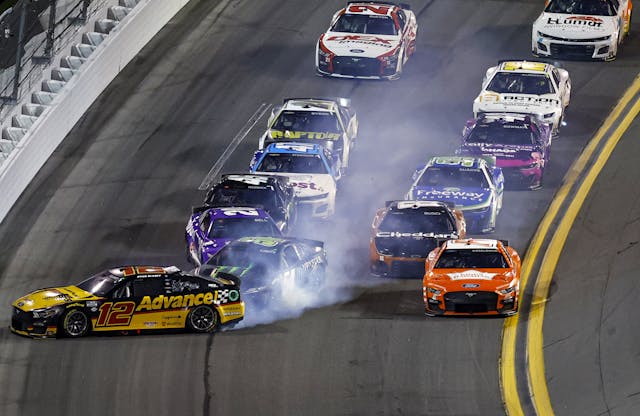
Most of the auto racing audience follows the sport on TV or social media. Because fans overall visit the track at most a few times a year, broadcasters and hosts play a powerful role in initiating new fans into the sport and keeping veterans abreast of its evolving tenor. Their words have power, and their choice to emphasize safety advancements rather than valorizing the danger of days long gone is conscious.
James Hunt, 1976 Formula 1 World Champion and icon of perhaps the most dangerous era of racing, said: “There’s a lie that all drivers tell themselves. Death is something that happens to other people and that’s how you find the courage to get in the car in the first place.”
We don’t talk about death in motor racing because it’s less common these days, but we also don’t want to think about it. We talk of racing tragedies—Dan Wheldon, Jules Bianchi, Justin Wilson—in terms of the safety innovations they brought about: the DW12 chassis, the Halo, the Aeroscreen. These are innovations meant to ensure that no driver ever suffers the ultimate fate again. Death is something we can beat with research, something that happened to people in the past. In some sense, this is true, but the risk remains. Many fans decry those who watch NASCAR races only for the crashes.

In anthropology, the word “taboo” is a linguistic relic born from an 18th-century mistranslation of a Polynesian word (tapu) and further misinterpreted by everyone from Captain Cook to Sigmund Freud. It most commonly describes anything that a community rejects so thoroughly that it becomes offensive to even discuss. (Freud is rich with examples on the subject.)
Taboo reveals a culture’s morals. What do people consider so bad that they can’t even talk about it? Often, it’s tied to base biological functions like digestion, reproduction, disease, and death—basically, anything that reminds us we’re not so different from animals.
Niki Lauda was uncommonly forthright on the subject, quantifying the risk of death he was willing to accept at 20 percent. That candor contrasted starkly with other drivers of his era, who, both in real life and as depicted on screen in Ron Howard’s Rush, shied away from such blunt discussion. It’s an uncomfortably high figure. Hard to face. Better to lie, even to yourself, or say nothing at all.
Which brings us back to Truffaut’s critique of violence in cinema. Merely by advocating for caution in the face of potential death, as Lauda did in Rush when he urged his competitors to cancel the 1976 German Grand Prix at the Nürburgring over safety concerns, all the more “ennobles” the other drivers, like Hunt, who vote to go ahead anyway in pursuit of victory.
Maybe it isn’t surprising that YouTube’s algorithm continually serves me crash compilation videos. NASCAR’s own TV ads rely heavily on crash footage. And while there’s a more-or-less unspoken rule to not use fatal crashes in this manner, people outside the racing fan community don’t know the difference. A high-speed car wreck threatens violence, injury, and death—that much is clear.
Death is taboo, but danger sells. And here’s a fun wrinkle: The Polynesian word tapu doesn’t mean “forbidden.” It translates as “sacred.”
British anthropologist Victor Turner is best known for his work on rites of passage. He identifies the in-between stage of a ritual: the literal or metaphorical liminal space on the very edge of social structure. By passing through it, participants of a ritual break down old social structures before adopting new ones. And there’s no better way to pull back from social norms than by facing base, biological functions—like death—that would otherwise be taboo. Think about the horror stories you’ve heard from fraternity pledge weeks; this stage is generally defined by “ordeals and humiliations” of a “grossly physiological” nature.
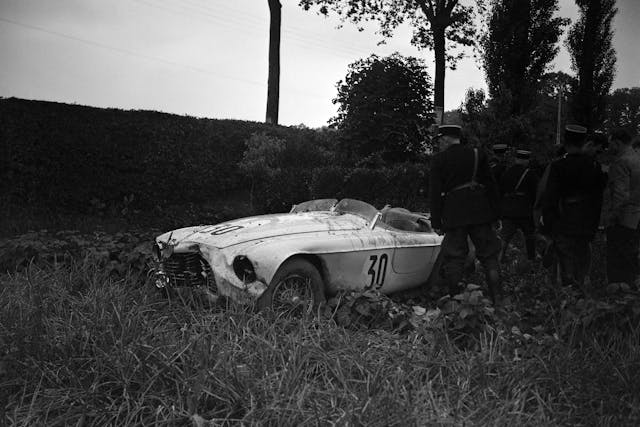
Liminal spaces are edgy. Their absence of societal order gives people a sense of permission to break taboos in a temporary, controlled manner. Edgar Alan Poe called it the “imp of the perverse.” Looney Tunes figures it as the devil on Bugs Bunny’s shoulder. Smokey Yunick called it innovation. Whoever you are, human beings have a strange fascination with doing things we know we’re not supposed to do. It’s neurological as much as sociological—the hit of dopamine you get while you’re waiting for the dealer to turn over the next card, temporarily straddling the line between winning big and losing everything. Checkers or wreckers.
To see a driver like Kyle Larson hold a stock car an inch from the outside wall at 170 miles per hour—“on the edge of out of control,” in the words of Days of Thunder’s Harry Hogge—is riveting. It’s spectacular. And it’s that edge that makes the difference, turning Larson from just another guy on the street to a special kind of person whose signature we call an autograph, whose face we want to wear on a t-shirt.
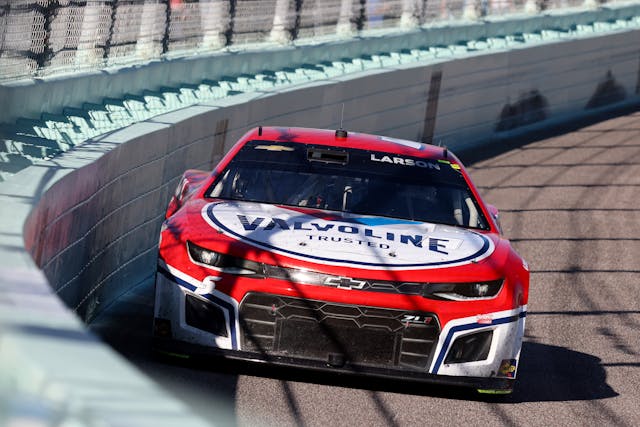
That edge is racing’s liminal space. There lives the power to compel, to thrill, to transform, and it requires risk. As much respect as I have for the skill required of professional sim racers and the Indy Autonomous Challenge, only real cars with real drivers get my blood pumping. Deep down in our animal brains, we know that big fiery crashes are scary, and we’re impressed by the people willing and able to face that danger and come out on top. It could be a NASCAR driver, an F1 pilot, or that guy at the go-kart track who always finds an extra tenth.
Ultimately, I don’t have an answer for how to reconcile the mix of fascination and horror I felt watching Michael Mann’s Ferrari. Yes, it’s a good thing that sanctioning bodies have prioritized safety as much as they have over the last half-century. And I’ll always be in favor of erring on the side of caution when it comes to deciding when to wave that yellow flag. We should keep designing safer race cars. Make that line between life and death, crossed in every crash, as close to symbolic as possible.
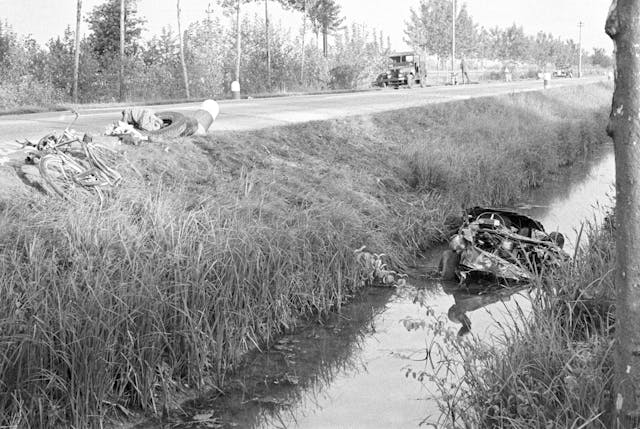
That’s my rationalization, anyway. Hunt and his ilk surely had theirs, despite knowing the risks. Human beings are complex, imperfect, and often inexplicable; the societies and governments we’ve made are no different. Yet we always make room on the edges for liminal spaces, where we break taboos. Where the forbidden takes on an air of the sacred.
Confronting the reality of these spaces can mean accepting something immoral about them. Or something amoral, at least. For better and worse, that’s where that deep-down appeal of racing lies.
The edge.
***
Check out the Hagerty Media homepage so you don’t miss a single story, or better yet, bookmark it. To get our best stories delivered right to your inbox, subscribe to our newsletters.
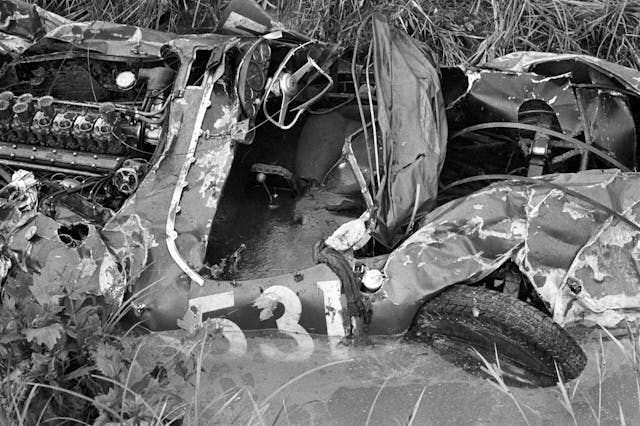


Death is lurking around the corner no matter what you are doing or where you are.
We as a human race most of us do not dwell on death and we focus on life and living. How well you master this is how well you deal with it. Some people live as if they will never die doing crazy stuff. While others dwell on death and often become afraid of many things.
There is a time for all of us coming and you must compartmentalize it. You need to still live but not be afraid.
I often wondered how the F1 drivers in the 50’s and 60’s ever got in the cars. I recall Gurney saying he refused his belts in his Eagle as the magnesium body and the gallons of fuel were more feared than being thrown from the car.
Death in racing is much rarer today and often the flight home may hold more risks as a number of racers also died in airplane crashes.
I was nearly killed in two car crashes not of my doing. It was hard to get back in the car but you do. Life goes on and God has a plan.
Well said.
Agreed. Watching people live in absolute fear and terror since the virus of unspecified origin came out while others like me continued to live as close to normal as we could was eye opening. All of us know we will die someday but some got so afraid of dying they locked themselves away and cut off nearly all outside comment. I know some who still today won’t do much of anything in pubic. They still live in fear.
The drivers of the earliest days of F1 were incredibly brave. They are heros of the sport.
Growing up in the late 50’s and early 60’s, I recall reading articles about the brave racing drivers who faced death every weekend and how they prepared for the upcoming event like Gladiators. Men (mostly) with nerves of steel and ice water in their veins, giants among us mere mortals. Then I found myself in the middle of a war, danger was part of everyday life. A mission came up, you checked your weapon, drew your ammo and got on the chopper with a bunch of other guys, went out and did your job (and we certainly did not have nerves of steel). Racing drivers choose to do what they do for a living, it’s dangerous, but anytime they feel it’s too risky, they can pull off the track, shut off the engine, and walk away. So now I appreciate the skill of top drivers, but I don’t buy into this “defying death” mystique, that’s nonsense…a lot of everyday jobs are just as risky (a cop, for example). Race drivers are no more (or less) brave than a lot of very average people, they just have a talent and choose to use it.
Amen to that. Nowadays, even with all the new safety gizmos, it’s still dangerous on your local highways – because of all the nuts behind the wheel. Just being an ordinary driver takes bravery, and paying attention.
The rulebook is written in the racer’s blood.
I well remember the nearly weekly reports of racer deaths – in most all of the various series – but yeah, you have to compartmentalize it and believe you can dabble with The Edge and come away with that nearly supernatural experience. It’s not lost on me, though, that The Other Guy can be a factor. I still abhor wrecks, but view them as basically a training video in hopes of recognizing & avoiding how they’re set up, so to speak.
I have raced for 8 years in Europe in the Historic European Championship, I have seen series crashes, fatal crashes, but I always told myself it will never happened to me it will always be the other guy. I believe strongly in the fact that when you start to think about the fact that you can die that day, you better stop.
Bert, and then there is superstition. Dad was not a race car driver. He was a WWII fighter pilot. He decided (convinced himself?) that pilots who had their pictures made with their airplane, died on their next mission. We have no pictures of Dad with “his” fighter. He had his picture made on a friend’s ride. Lived to be 86!
Excellent article.
Very good commentary!